Meet Bella, a playful Pit Bull who loves exploring. Her owners, Mark and Sarah, wanted to guide her to be a well-behaved companion.
They learned about positive reinforcement for Pit Bulls. This method rewards good behavior rather than punishing the bad. They aimed to teach Bella, improve her obedience, and strengthen their bond.
First, they researched positive reinforcement principles. They found timing and consistency were crucial. Rewards had to come right after Bella’s good behavior.
Mark and Sarah began teaching Bella commands like ‘sit’ and ‘stay.’ They used treats and praise as rewards. They saw Bella grow eager to learn, thanks to the positive feedback.
They focused on using clear and simple verbal cues. This helped avoid confusion and kept commands consistent for Bella.
They also used positive reinforcement to shape Bella’s behavior better. When Bella acted out, they directed her to better activities. They rewarded her for picking these better options.
Key Takeaways:
- Positive reinforcement training focuses on rewarding desired behaviors to shape a Pit Bull’s behavior effectively.
- Timing and consistency are crucial in positive reinforcement training.
- Using short and uncomplicated verbal cues ensures clarity and consistency in commands.
- Shaping behavior and redirecting unwanted behaviors are important aspects of positive reinforcement training.
- Establishing a strong bond and trust with your Pit Bull is key to successful positive reinforcement training.
Timing is Everything in Positive Reinforcement Training
Correct timing is a must in positive reinforcement training. To work, the reward must come seconds after the correct behavior. For instance, if a dog gets a treat for sitting but has already stood up, it won’t work. Giving rewards right after good behavior is crucial. It helps dogs learn the right actions quickly.
In the case of Pit Bull behavior training, timing is super important. Pit Bulls, like all dogs, learn fast when the reward comes right after their action. Quick rewards after doing what you ask teach them to keep doing it.
Let’s say you’re teaching a Pit Bull to sit. You must reward them right after they sit to the cue. This shows the connection between sitting and the reward. If the treat comes late, the dog might get confused. They won’t know what they did right.
The main point is, in positive reinforcement training, timing is crucial. The treat needs to come right after the correct action. This makes the dog understand the link between action and reward better.
Linking the right behavior to rewards is key with dogs. Pit Bulls are smart and learn quickly which behaviors bring treats. Giving treats at just the right time helps shape their behavior the way you want.
Using a Clicker for Precise Timing
For even more accurate timing, many trainers use a clicker. This small tool makes a sound when pressed. It signals the dog right away that they did something right and a treat is coming.
The clicker sound by itself means nothing to a dog. But when linked to treats and correct actions, it becomes a clear signal. It makes the link between action and reward very clear and immediate.
When you use a clicker, you have to be very precise. You click the exact moment the dog does what you want. This ensures the dog understands exactly what action is getting them the treat.
Examples of Timing in Positive Reinforcement Training
| Behavior | Timing of Reward |
|---|---|
| Sitting | Immediately after the dog sits |
| Coming when called | Right when the dog reaches you |
| Lying down | As soon as the dog lies down |
| Walking on a loose leash | When the dog is walking calmly |
From the table examples, you can see the reward must be quick. It tells the dog they did something right. This encourages the behavior to continue.
The Importance of Consistency in Positive Reinforcement Training
Consistency is key in positive reinforcement training. Every family member should use the same cues and commands. This avoids confusing the dog and makes expectations clear. To help everyone remember, consider posting a list of cues where it’s easy to see.
It’s also crucial to reward the dog right when they do what you want. This could be treats, praise, or playtime. Such rewards tell the dog they’re doing the right thing.
“Consistency is key in positive reinforcement training. By using the same cues and rewarding the desired behavior consistently, you can effectively communicate your expectations to your Pit Bull.”
However, remember never to reward bad behavior. You should only reward what you want to see more of. This teaches the dog what behaviors are good and which are not. It encourages them to keep up the good behavior.
Being consistent is vital in changing a dog’s behavior for the better. Using positive methods and clear expectations helps train your Pit Bull well. This shapes their behavior in a positive direction.
Benefits of Consistency in Positive Reinforcement Training:
- Clear communication of expectations
- Reduced confusion for the dog
- Increased understanding of desired behaviors
- Enhanced motivation to display desired behaviors
- Improved behavior modification outcomes
Choosing the Right Verbal Cues for Positive Reinforcement Training
Picking the right verbal cues is vital for talking to your Pit Bull during training. These cues make it easy for your dog to understand and react the right way. This leads to better training results. Here are some common verbal cues for positive reinforcement training:
- Watch: This cue means your dog should look at you and not look away.
- Sit: This tells your dog to sit down.
- Stay: This cue teaches your dog to stay put until you say otherwise.
- Down: This means your dog should lie down.
- Off: Use it to get your dog off of people or furniture.
- P: This tells your dog to stand up.
- Come: This cue asks your dog to come to you.
- Heel: This tells your dog to stay close to you as you walk.
- Leave it: Your dog should not touch or pick up anything you point to.
- Drop or Give: This is for when you want your dog to let go of something they have.
By using clear and simple verbal cues, you and your Pit Bull will understand each other during training. Always using these cues makes it easy for your dog to learn what you want.
Let’s see it in action:
| Cue | Description |
|---|---|
| Watch | The dog needs to look at the trainer and keep eye contact. |
| Sit | This command makes the dog sit on its hind legs. |
| Stay | This command means the dog shouldn’t move until told otherwise. |
| Down | The dog has to lie down completely. |
| Off | This gets the dog off something or someone, including furniture. |
| P | Makes the dog stand on all four legs. |
| Come | This calls the dog to move closer to the trainer. |
| Heel | The dog should walk near the trainer’s side. |
| Leave it | Prevents the dog from touching or picking things up from the ground. |
| Drop or Give | The dog needs to let go of whatever is in its mouth. |
Clear and short verbal cues help you and your Pit Bull talk during training. This makes training go smoothly.
Using Rewards in Positive Reinforcement Training
Rewards are key in Positive Reinforcement Training for Pit Bulls. You train your Pit Bull through giving rewards for good behavior. This method involves various kinds of rewards, such as:
- Food treats: Many dogs love food, making treats a great way to reward your Pit Bull.
- Praise: Saying “good dog” matters. Pairing food with praise makes the reward even stronger.
- Petting: A nice pat can also reward your Pit Bull. They love affection, and it shows them they did well.
- Favorite toys or games: Some dogs prefer playing. Using their favorite toy as a reward keeps them interested.
Make sure the rewards fit your Pit Bull. Watch what they like and use that to motivate them.
A top dog trainer, Karen Pryor, said:
“Positive reinforcement is the most powerful tool you have at your disposal in shaping your dog’s behavior.”
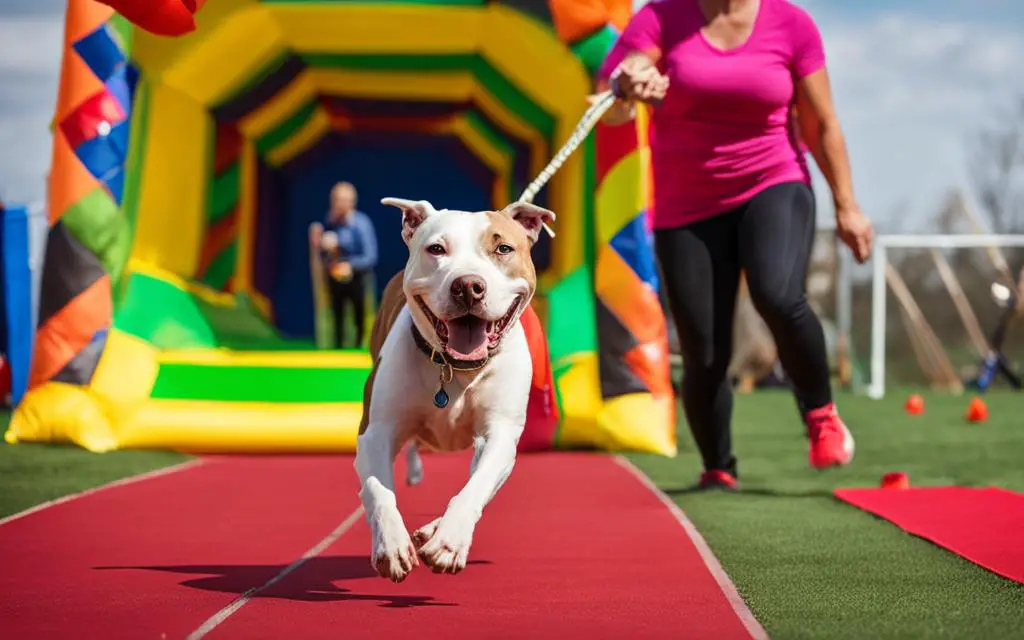
Always reward your Pit Bull right when they do something good. This teaches them what’s behavior is being rewarded. Also, be sure to always use the same rewards. This keeps your dog focused on the training.
Rewarding your Pit Bull correctly in training helps fix bad behaviors. It teaches them in a happy, productive way. This approach strengthens your bond and makes a well-behaved, joyful pet.
Structuring Training Sessions for Pit Bulls
Keep training for Pit Bulls short and sweet. They have short attention spans, so 15-30 minutes is perfect. Start with easy commands like sit and down. Then add harder ones as your dog gets better.
Be positive and excited during training. Reward your dog when it does things right. Change how long and hard training sessions are to keep your dog interested.
Pit Bulls do well with a routine. Pick a quiet place without distractions for training. Try to train at the same time every day. This helps your Pit Bull know it’s learning time.
“By keeping training sessions short and focused, you can keep your Pit Bull’s attention. This prevents them from getting too tired. It makes learning easier.”
Use treats, praise, and petting to reward your Pit Bull in training. Always use a calm and happy voice. This makes training a good experience for your dog.
Change up how long and hard training sessions are. Start with easy commands and work up to harder ones. This builds your Pit Bull’s confidence and avoids frustration.
Be patient and stay consistent in your training. Each Pit Bull learns at their own pace. Stay positive, and celebrate every little win.
| Training Session Tips for Pit Bulls |
|---|
| Keep sessions short (15-30 minutes) to maintain attention. |
| Start with basic behaviors and gradually add more advanced cues. |
| Use positive reinforcement techniques, such as treats and praise. |
| Establish a routine to create structure and consistency. |
| Vary the duration and difficulty of training sessions to keep your Pit Bull engaged. |
Building on Basic Behaviors
After your Pit Bull gets the basics, add more advanced cues. Try stay, come, and leave it. Break each new command into small steps. Reward your dog for every success.
“Adding new behaviors lets your Pit Bull learn more commands. It keeps their mind busy and grows your bond.”
Add distractions to training to teach your Pit Bull to listen in any setting. Start easy and slowly add more challenging distractions. This teaches your Pit Bull to focus on commands no matter what.
Make sure training stays fun for your Pit Bull. End every session on a happy note, even if progress is slow. Being consistent, patient, and positive are the keys to good training sessions.
Pit Bull Training Tips for Various Behaviors
Positive reinforcement training works well for teaching Pit Bulls. By giving rewards, you shape their behavior for the better. These training tips cover common issues:
Preventing Door-Darting
Train your Pit Bull to sit before heading outside to stop door-darting. This teaches them to wait calmly for the door to open. Use treats or verbal praise as rewards for sitting before you go out.
Avoiding Jumping
Teach your Pit Bull to sit to get petted, which helps avoid jumping. If they jump up, ignore them and look away. Once they sit, give them attention and praise. Stay consistent with this to make the behavior stick.
Reinforcing Quiet Behavior
If your Pit Bull barks a lot, train them to stay quiet or give them a toy instead. Give treats or praise when they’re quiet. They’ll learn that silence brings rewards.
Always use positive reinforcement for behaviors you want. Don’t reward unwanted actions. Clear and consistent cues with rewards make your Pit Bull understand and maintain good habits.
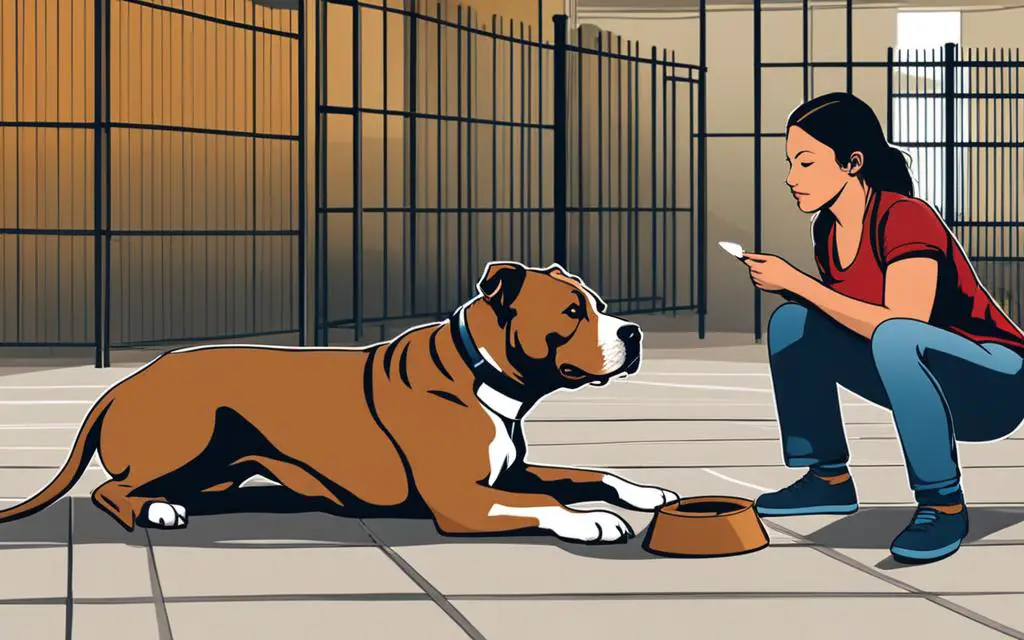
| Behavior | Training Technique |
|---|---|
| Preventing Door-Darting | Teach your Pit Bull to sit before going outside. Reward with treats or praise. |
| Avoiding Jumping | Teach your Pit Bull to sit before being petted. Ignore jumping behavior and reward sitting. |
| Reinforcing Quiet Behavior | Reward your Pit Bull for being quiet or redirect their attention to a chew toy. |
Teaching Recall to Pit Bulls
Teaching recall, or coming when called, is a must for Pit Bulls. It keeps them safe and gives them freedom off-leash. Using positive reinforcement helps teach this vital behavior and strengthens your bond with your Pit Bull.
Begin teaching recall in a place with no distractions, like your home or a fenced yard. Start up close and then increase the space between you as your Pit Bull gets better at responding.
Here are some steps to follow when teaching recall:
- 1. Establish a strong foundation: Start by linking their name to positive things, like treats and kind words. This makes them more likely to come when called.
- 2. Use high-value rewards: Use their favorite treats, toys, or praise to make coming to you worth their while. This rewards their good behavior and encourages them to do it more.
- 3. Utilize an enthusiastic tone of voice: Call them with joy and excitement. This grabs their attention and makes coming to you exciting.
- 4. Avoid punishment: Don’t punish your Pit Bull for coming slowly or not at all. Punishment can make them not want to come. Instead, always use positive rewards.
- 5. Gradually increase distractions: Slowly introduce more distractions as they get better at coming when called. Start small, then move to tougher challenges like noisy places or when other dogs are around.
- 6. Practice regularly: Keep practicing recall often, in different places and with various distractions. This will make the recall command strong and reliable.
Teaching recall demands time and a lot of patience. Celebrate every progress and keep using positive reinforcement. With these tips and consistent practice, your Pit Bull will master recall. This grants them the freedom they enjoy.
| Common Mistakes to Avoid | Solutions |
|---|---|
| Relying on punishment | Use positive reinforcement instead of punishment to create a positive association and improve their response to the recall command. |
| Inconsistency | Be consistent in your signals and rewards. Inconsistency confuses your Pit Bull, making it harder for them to learn the recall command. |
| Skipping the foundational training | First, teach them their name and basic commands. This lays a strong base for successful recall training. |
| Not practicing in different environments | Train in various places so your Pit Bull learns to respond to the recall command everywhere. This boosts their recall reliability. |
Pit Bull Training Tools and Equipment
Training Pit Bulls right means having the best tools and equipment. Some key items can really help with positive reinforcement training:
1. Long Training Leash
A long training leash gives you control while letting your Pit Bull have some freedom. It’s great for teaching recall and commands in open areas. You can manage their moves while they explore.
2. Crate
A crate is essential for crate training and giving your Pit Bull a cozy space. It helps them learn to stay calm when confined. Plus, it’s useful for house training and stopping bad habits when you’re not around.
3. Clicker
Clicker training uses a clicker for positive reinforcement. It marks the moment your Pit Bull does something right. This improves communication and makes it clear which behavior you like.
“The right tools and equipment can really boost your Pit Bull’s training and their behavior.”
These tools, along with positive reinforcement, can positively shape your Pit Bull’s behavior. But remember, tools aren’t everything. Consistency, patience, and a strong connection are key for long-term success.
| Training Tool/Equipment | Description |
|---|---|
| Long Training Leash | A long leash provides control during off-leash training sessions, allowing freedom while maintaining safety. |
| Crate | A crate provides a secure space for your Pit Bull and aids in crate training and behavior modification. |
| Clicker | A clicker is used for clicker training, marking the desired behavior and reinforcing positive actions. |
Remember, the best training sessions come from using the right tools with lots of positive reinforcement and building a strong bond with your Pit Bull.
Pit Bull Training Challenges and Solutions
Training Pit Bulls can be tough. They often have a strong prey drive and can be stubborn. This means owners need to be patient and keep at it. But, with the right methods, you can handle these challenges.
Set Clear Expectations
It’s crucial to make things clear when training Pit Bulls. Let your dog know what’s okay and what’s not from the start. Using consistent rewards helps a lot.
Be Consistent in Training Sessions
Being consistent is key. Pit Bulls do well with a set schedule and knowing what to expect. Have training sessions regularly and stick to your plan. This makes learning easier for your dog.
Use Positive Reinforcement Techniques
Positive reinforcement works great for Pit Bulls. Reward their good behavior with treats, praise, or play. Stay away from punishment. It can cause fear and aggression.
Work with a Professional Trainer
If training gets tough, think about hiring a dog trainer. Go for one that uses positive training. They can offer tailored advice and sort out problems you’re facing with your Pit Bull.
Stay Patient and Persistent
Training needs patience and hard work. Some Pit Bulls might take longer to learn certain things. Keep at it and celebrate the small wins. With effort and time, your Pit Bull can be well-trained and obedient.
| Challenge | Solution |
|---|---|
| Strong Prey Drive | Guide their energy into activities like playing with toys or scent work. Use puzzle toys and obedience training for mental exercise. |
| Potential Stubbornness | Motivate with great treats and rewards. Break training into smaller parts. Stay patient and consistent. |
| Aggression or Reactivity | Get help for aggression or reactivity from a professional. They can offer behavior techniques and a safe training plan. |
Conclusion
Positive reinforcement training works great for Pit Bulls. It’s a kind and effective way to teach them. The right timing, staying consistent, and rewarding them helps a lot.
Pit Bulls are smart dogs that learn quickly with positive reinforcement. Starting their socialization and training early is key. It helps avoid bad habits and promotes good ones.
To train your Pit Bull well, use the right positive methods. Always be consistent and work on building a strong relationship. With time and effort, your Pit Bull will become a well-mannered family member.

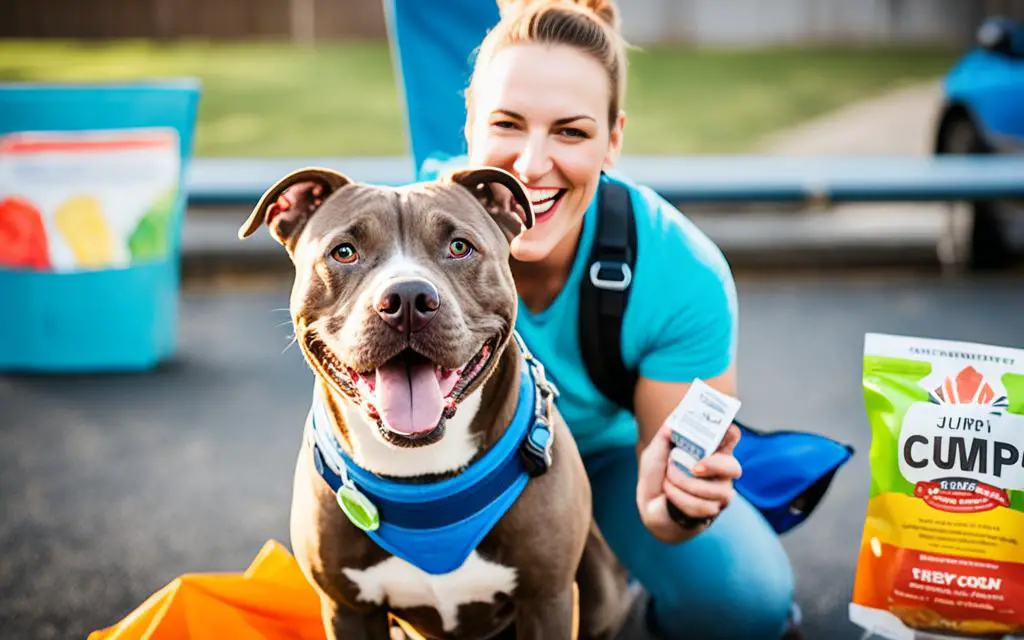
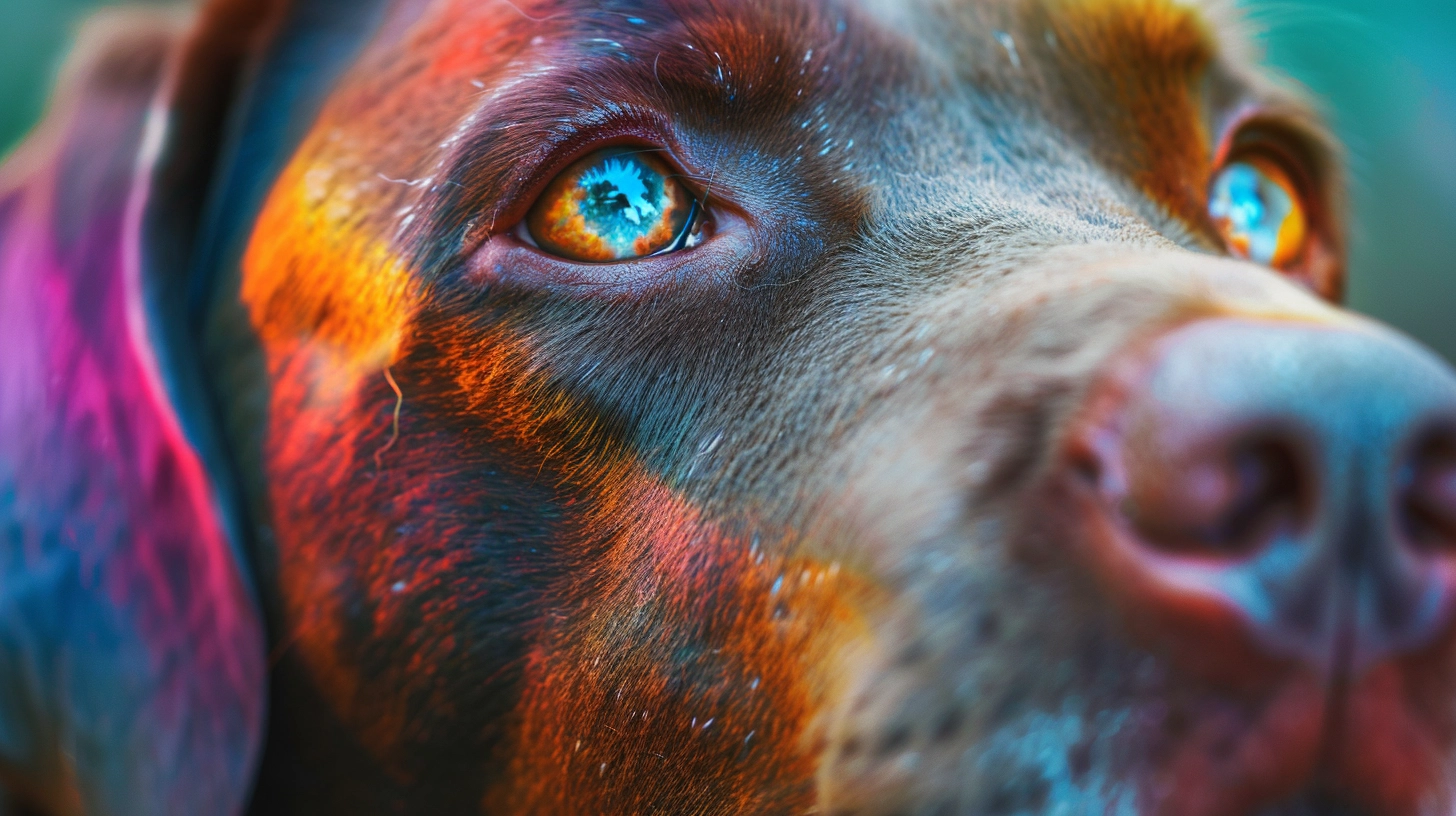
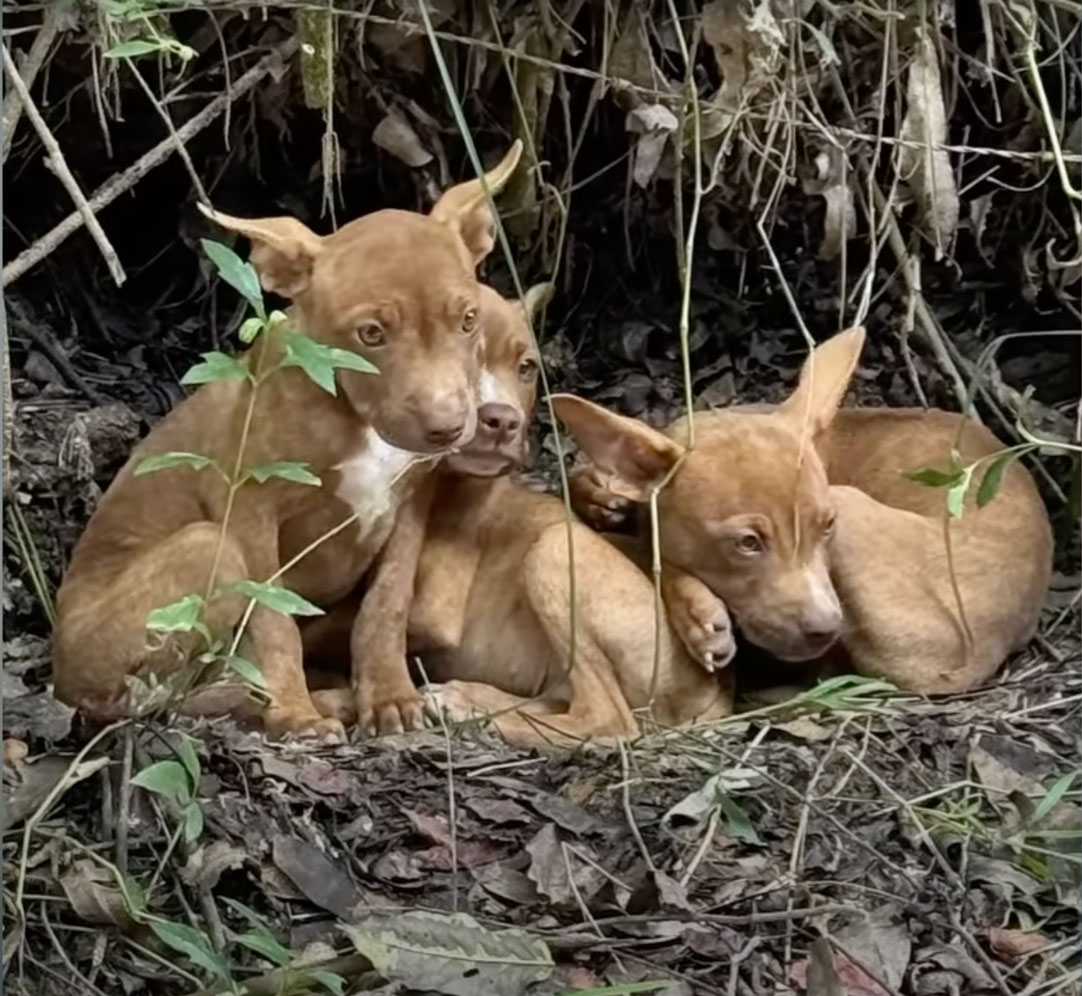

Leave a Reply